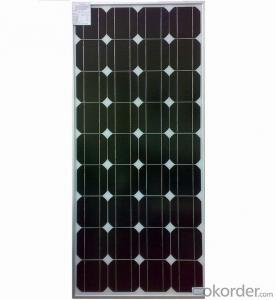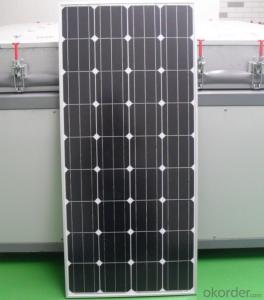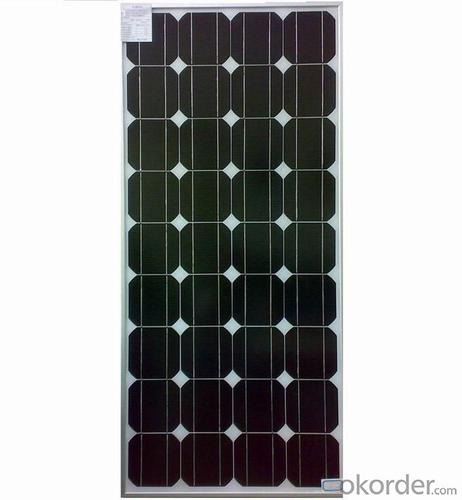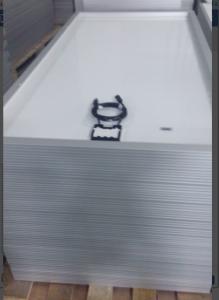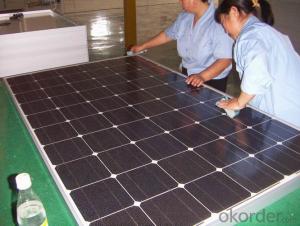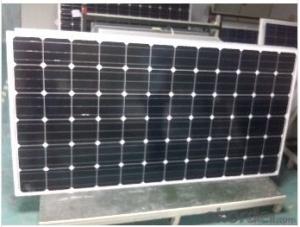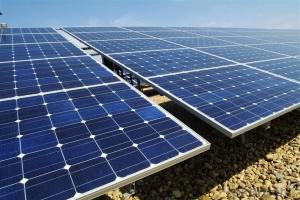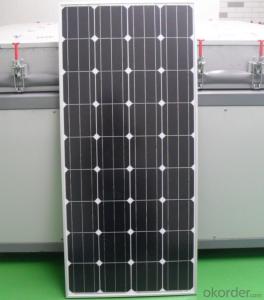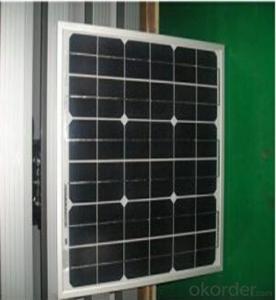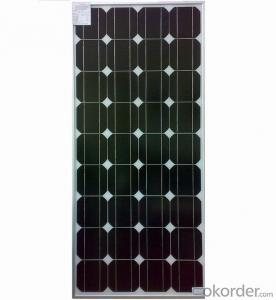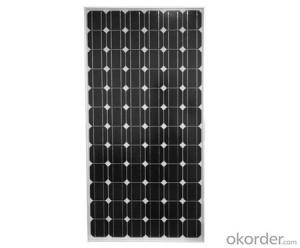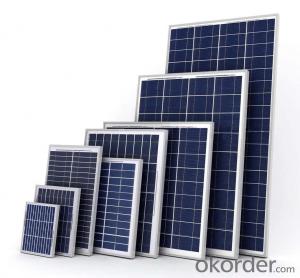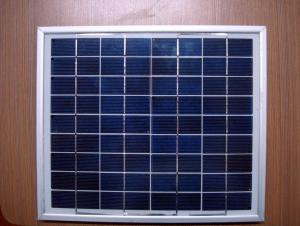255w CNBM Solar Monocrystalline Series (250w—270w) for Trailers
- Loading Port:
- China main port
- Payment Terms:
- TT OR LC
- Min Order Qty:
- 10000 watt
- Supply Capability:
- 500000 watt/month
OKorder Service Pledge
OKorder Financial Service
You Might Also Like
Specification
CNBM Solar Monocrystalline Series III (250W—260W)
Characteristics
Max Power Voltage Vmp(V) | 30.1 | 30.2 | 30.4 |
Max Power Current Imp(A) | 8.32 | 8.44 | 8.55 |
Open Circuit Voltage Voc(V) | 37.5 | 37.6 | 37.7 |
Short Circuit Current Isc(A) | 8.87 | 8.99 | 9.10 |
Max Power Pm(W) | 250 | 255 | 260 |
Temperature Coefficient of Cells
NOCT | 45℃±2℃ | |
Temperature Coefficients of Isc (%/℃) | - 0.0492 | |
Temperature Coefficients of Voc (%/℃) | – 0.3374 | |
Temperature Coefficients of Pmp (%/℃) | –0.4677 | |
Mechanical Data
Dimension | 1638 x 982 x 40 mm | |
Weight | 19.5kg | |
No. of Cells and Connections | 60 (6 x 10) | |
Tolerance | 0~+5W | |
Cell Monocrystalline Cell | 156 x 156 mm | |
Packing | 700 Pcs/40ft(H) Container |
Limits
Operating Temperature | –40 °C to +85°C | |
Storage Temperature | –40 °C to +85°C | |
Max System Voltage | 1000VDC(IEC) / 600VDC(UL) | |
IV Curve
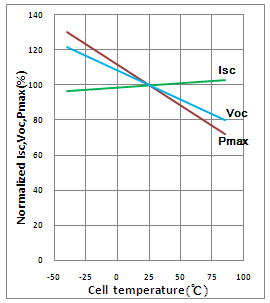
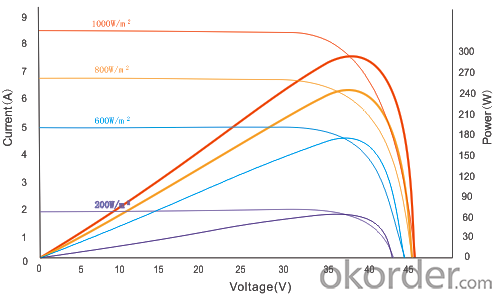
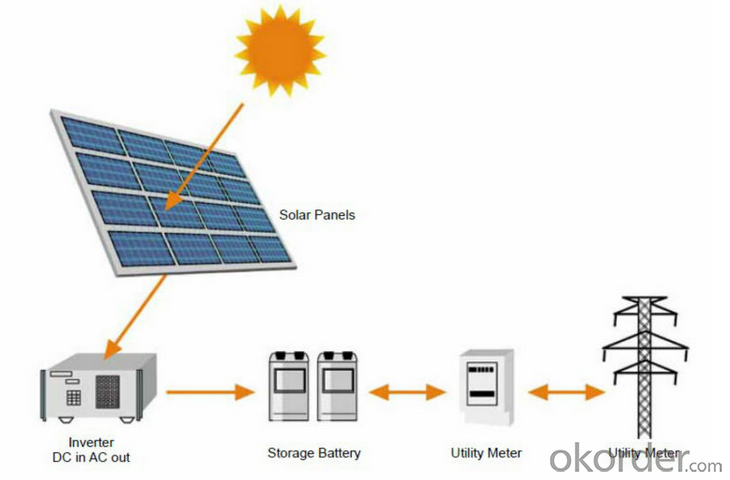
Image
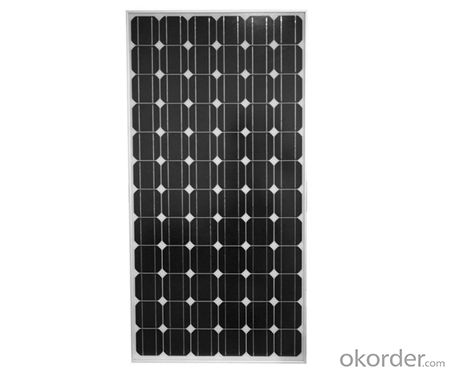
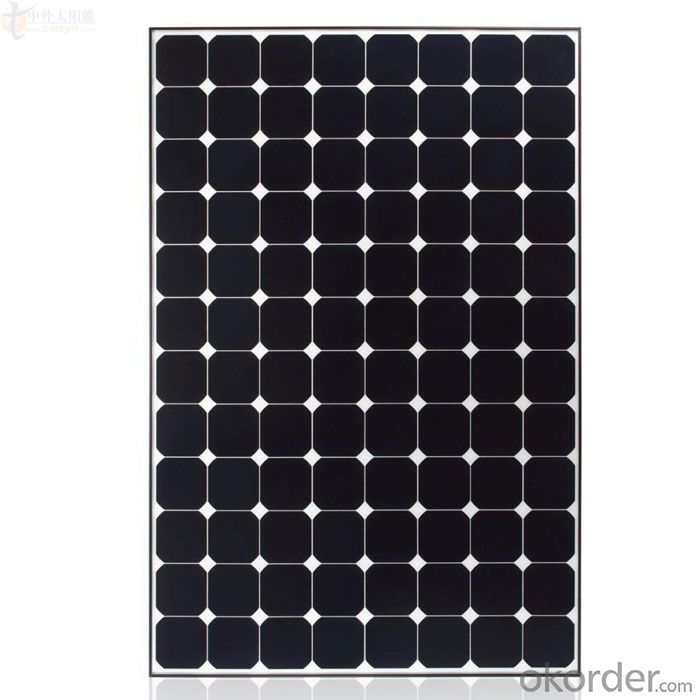
Guarantees
Products Guarantee 12 yrs free from defects in materials and workmanship
Performance Guarantee No less than 90% within 10yrs and no less than 80% within 25yrs
Certificates TUV (IEC61215&IEC61730), VDE(IEC61215&IEC61730), UL, CE
FAQ
1. Q: Do you have your own factory?
A: Yes, we have. Our factory located in Jiangsu province.
2. Q: How can I visit your factory?
A: Before you take off from your country, please let us know. We will show you the way, or arrange time to pick you up if possible.
3. Q: Do you provide free sample?
A: Usually we do not offer free sample
4. Q: Could you print our company LOGO on the nameplate and package?
A: Yes, we can do that.
- Q: Solar panels which is the one produces the power...I wanna the complete description about it...
- This okorder for more detail.
- Q: Can solar panels be used in deserts?
- Yes, solar panels can definitely be used in deserts. In fact, deserts are considered ideal locations for solar power generation due to their high solar irradiance and vast open spaces. The availability of ample sunlight allows solar panels to efficiently convert sunlight into electricity. Additionally, deserts often have less cloud cover and atmospheric interference, resulting in more consistent and predictable solar energy production.
- Q: Can solar panels be used to power a military vehicle?
- Yes, solar panels can be used to power a military vehicle. Advances in technology have allowed for the development of lightweight and flexible solar panels that can be integrated into the structure of military vehicles. These solar panels can capture sunlight and convert it into electrical energy to power various systems and reduce reliance on traditional fuel sources. Implementing solar panels can enhance the sustainability and operational efficiency of military vehicles in certain scenarios.
- Q: Can solar panels be installed in a community or neighborhood?
- Yes, solar panels can be installed in a community or neighborhood. In fact, many communities and neighborhoods have embraced solar energy and installed solar panels on residential and commercial buildings. Installing solar panels in a community or neighborhood can contribute to a cleaner environment, reduce energy costs, and promote sustainable living. Additionally, community solar initiatives allow multiple households to collectively benefit from shared solar installations, making it accessible to a wider range of residents.
- Q: We are thinking about useing solar panels for our house.Does anyone know about solar panels? If so could you please tell me some information on them,and the cost for a home,to install them.
- Solar electricity systems can save you more money. Want to know more features about Solar Panels Companies? Contact us today for more details.
- Q: how much energy does a kilowatt solar panel produce in a year? (average)
- You would be amazed how often I have answered this question. The answer is that it depends on your latitude and local weather . Let's see if I can give you enough information so that you can determine the answer for yourself. A kW solar panel is rated at kW when it is exposed to a solar flux of kW/m^2 (called a peak sun hour). There are readily available tables of effective peak sun hours per day by city (see Reference ). Let's use Fairbanks, AK as an example (it is the first line of the table). Fairbanks get an average of 3.99 of peak sun hours per day on average. So your panel would produce 3.99 kW*hr per day on average.
- Q: The battery is 9ah and the solar panel is 20w
- You need a switch mode voltage converter, made to input 2 to 20 volts, and output around 7 volts. Some cell phone chargers can do that, or be modified for that voltage. Option B is to get another battery and use the system at 2V, and regulate that to 6 or 5 volts for charging (you can directly use your car charger), with switch mode regulators. I would find that system to be more flexible. Getting an 8Ah would leave extra capacity. BTW, for a 9AH battery, 20W is kid of big. I have a 36Ah battery and a 20W panel, and that is good for it.
- Q: I've been thinking and I'd like to have solar panels installed on my roof at some point to help reduce our electricity consumption- but I live in IL and in the winter it frequently snows. Is there such a thing as heated solar panels so they don't get coated w/ice or snow? Are solar panels even a feasible option in IL? Thank you, Anna
- Yes solar panels are a good way to save money. I know a friend of mine she has 2 solar panel she lives in IL.I i know she told me that this year she saved 500$ in electricity bills. Good luck!
- Q: How are solar panels installed?
- Solar panels are typically installed on rooftops or open ground areas. First, the area is assessed for its solar potential. Then, mounting structures are installed securely on the roof or ground. Next, solar panels are attached to these structures and wired together in a series or parallel configuration. Finally, the panels are connected to an inverter that converts the DC electricity generated by the panels into AC electricity for use in homes or businesses.
- Q: I have heard a lot about solar panels and I want to know how these solar panels works and is it really possible to generate electricity using solar panels. And what is the cost of getting a solar panel installed?
- They consist of a semiconductor junction which has an uneven distribution of charge so it has an electric field in it. When light hits the material, an electron is knocked off from its parent atom and can move around the material. The electric field pushes it in one direction, et voila. You have current! (it's most complicated than that, but it needs quantum physics to understand). In summary, light goes in and DC electricity comes out of the panel. To use it in your house you will need an inverter as well, which turns it into useful AC. Then you need a way of using up the extra electricity you produce when it's sunny but you're not using power Some people use batteries, most people use 'grid tied' systems, plug in to the national grid and sell electricity to power companies that you're not using! Unfortunately, without major subsidies (like those offered in Germany, Japan and soon the UK), solar panels aren't likely to be cost effective. In the UK it costs about ?5-6,000 to install a kWp of solar power and it will make about ?90 of electricity a year. In California it's sunnier, so would make about ?200 of electricity a year, but it's still very VERY expensive without subsidy. On the plus side, technology is improving. Thin film technology can be done at half the price, so I'd say hold on until thin film solar cells go up for sale (right now they only sell them to companies for big projects). Prices should drop by at least half in the coming years if they can make enough to sell to households - and at that price it'll be worth it in places like California.
Send your message to us
255w CNBM Solar Monocrystalline Series (250w—270w) for Trailers
- Loading Port:
- China main port
- Payment Terms:
- TT OR LC
- Min Order Qty:
- 10000 watt
- Supply Capability:
- 500000 watt/month
OKorder Service Pledge
OKorder Financial Service
Similar products
Hot products
Hot Searches
